Isolated Tribes: The Uncontacted Peoples Of The World That You Probably Don’t Know About
Hidden in the deepest and darkest pockets of the Earth exists a population of people who continue to remain isolated, refraining from contact with the outside world. They resist modernity and change while still embracing and staying true to their older way of life. Scattered around the world, most of these tribes live in South America’s dense Amazon region, or Africa.
These tribes are all vulnerable to the impending threat of technology, industrialization, and the contemporary ideas, philosophies, and beliefs stemming from society.
Sentinelese People Of North Sentinel Island
As direct descendants of Africa’s earliest humans, the Sentinelese are the remnants of a 60,000-year-old tribe. Residing on North Sentinel Island in Bengal Bay, they are also considered to be the most isolated people on the planet.

Source: Wikimedia Commons
In the late 1800s, a British Royal Navy explorer kidnapped the tribespeople. They were subjected to horrible experimentation and disease which wiped out their population. Not much is known about the Sentinelese people, except that they remain hostile to visitors. Therefore, any outside contact is forbidden.
Jarawa People Of The Andamanese Islands
Belonging to the Andamanese Islands, North Sentinel is also home to the Jarawa, another ancient tribe. They have resided on the island for 55,000 years. Unfortunately, they haven’t been as successful in remaining untouched by modernity as their Sentinelese neighbors ( some small groups of the 400 remaining nomadic tribes have resisted contact).
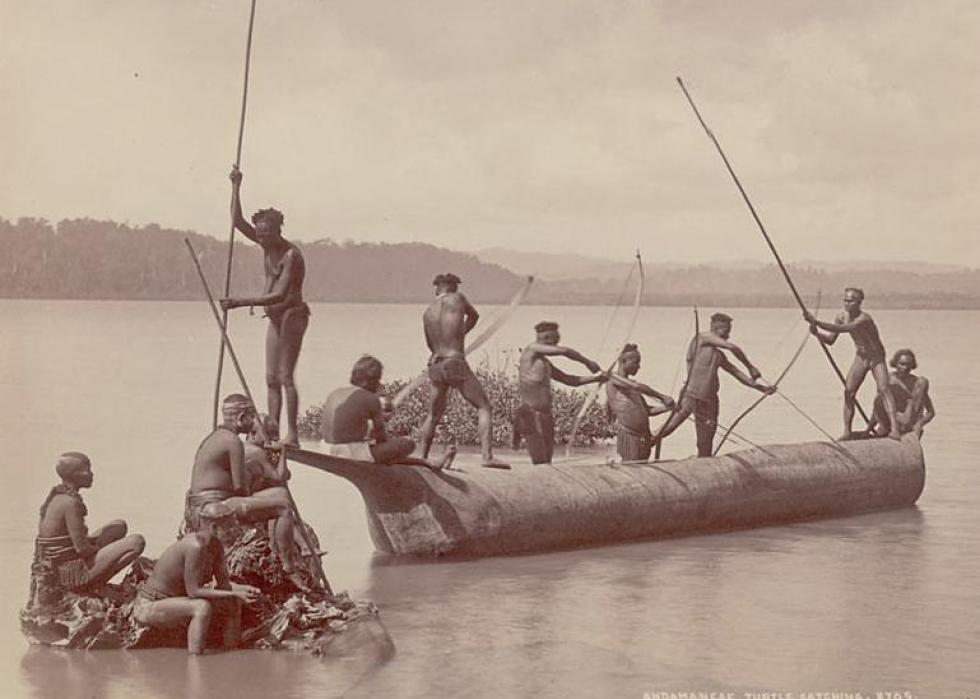
Source: Colin Murray/Bourne and Shepherd / Wikimedia Commons
In 2002, India’s Supreme Court stopped construction. They wanted to build part of a highway through the peaceful land of the Jarawa people, which poachers and drug dealers still interrupt. Sadly, there’s also a rise of “human safari” tourists hoping to see the prehistoric hunter-gatherers in their most natural and primitive state.
Awa Of The Amazon
The Awa has become among the most vulnerable uncontacted tribes in the world due to illegal logging, deforestation, and other outside interference. Straddling the Peru and Brazil border, the Amazon rainforest has been home to the Awa for millennia. However, only about 60 to 80 of the estimated 600 left continue to fulfill their nomadic, uncontacted existences.

Source: Scott Wallace/Getty Images
While they primarily depend on the fruits of the land, the rest of the Awa people live isolated in protected jungle villages.
Lacandon Of Mexico
In the deepest depths of southern Mexico and northern Guatemala lies the Lacandon people of the Lacandon Rainforest. Some of their members still live uncontacted and isolated in the vastness of the forest.

Source: Pueblos Magicos
Today, the Lacandon exists in numbers less than 1,000. They are descendants of the Maya people who fled to the interior of the jungle in the wake of the Spanish conquest. The Lacandon people can be recognized by their long hair, white gowns, and specific dialect of the Yucatec Mayan language.
Yuqui Of Bolivia
Originally contacted by the Spanish in the mid-16th century, the Yuqui of Bolivia were then subsequently isolated from modern society for over 400 years until the 1960s. At the time, they were thought to belong to Siriono, a much bigger group. But, the Yuqui’s unique language, also known as Yuqui, made them want to become a separate tribe.
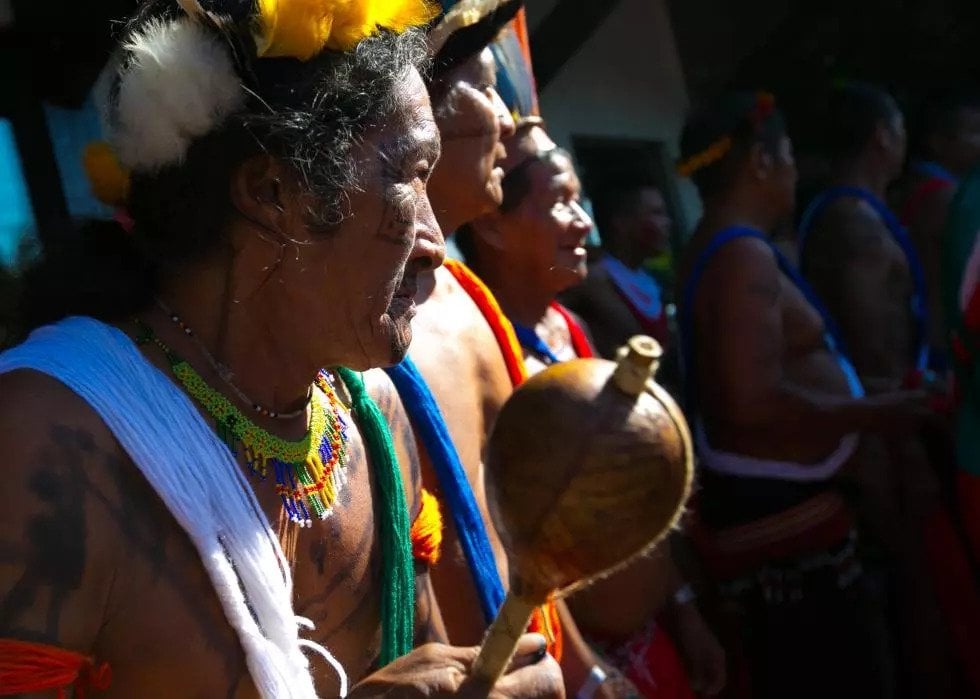
Source: LiadePaula/MinC / Flickr
At one time, they were spread over much of the Bolivian Lowlands, which is estimated to only have a population of 130 people now. Despite these known numbers, there are likely some uncontacted members that haven’t been counted.
Wajãpi Of Brazil And French Guiana
Given to a group of indigenous people, Wajãpi is the name of the members who speak the Tupi language. Although, the Wajãpi in French Guiana has a slightly different dialectic language. The members of this tribe dwell in a geographical area that straddles the border between Brazil and French Guiana and are scattered among smaller groups known as “kin.”

Source: radiotemblor.org
Depending on which side of the straddled border they reside, the Wajãpi have been in some contact with others outside of their region.
Ayoreo Of Paraguay
The Paraguayan Chaco region boasts some of the most pristine and stunning wilderness and has been the precious home of the Ayoreo people. Steadily, it’s been suffering at the hands of deforestation at the fastest rate on Earth.

Source: Fotografías Nuevas / Flickr
Since the first Mennonite farmers established colonies in the 1940s and 1950s, the Ayoreo people have been contacted. However, some remain isolated and uncontacted. Due to foreign ranching companies purchasing their land to clear it for cattle, the Ayoreo’s hiding places continue to dwindle.
Totobiegosode Of Paraguay
As a clear offshoot of the Ayoreo, the Totobiegosode (meaning “people from the place of the wild pigs”) people are even more removed from modern society. Primarily, the remaining survivors are constantly escaping from bulldozers and aggressive cattle ranchers.
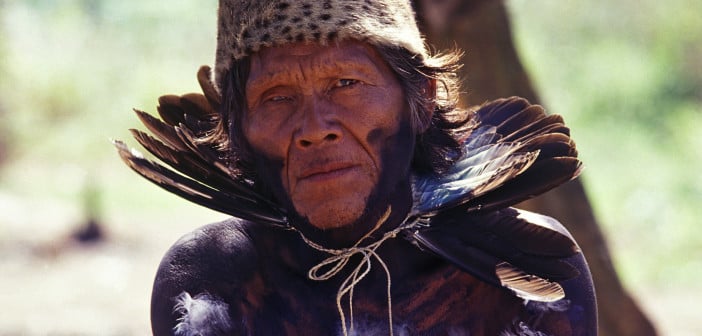
Source: Fotografías Nuevas/ Flickr
Some, however, have been able to retain a nomadic way of life, avoiding any contact with the outside world. Efforts to modernize or eradicate the Totobiegosode have forcibly caused a big group of them to retreat from the forest.
Palawan Island Tribes Of The Philippines
In the southern part of the Philippines’ Palawan Island resides around 40,000 indigenous people. Due to devastating mining encroachment and the thousands of settlers that the industry has brought in, some Palawan Island tribes are primarily uncontacted because of how deep they live on the island.

Source: Jacob Maentz/ Pinterest
Tau’t Bato, known as the “People of the Rock,” is one of the last discovered tribes. Reportedly, they live in the caves of an extinct volcano’s crater in Mt. Mantalingahan, Palawan Island’s highest peak.
Yuri/Carabayo Of Colombia
Cristóbal von Rothkirch of the Colombian National Parks Unit and Amazon Conservation Team took important photographs in 2012. These photographs proved uncontacted people’s existence that lives in the secluded rainforest located on the border of Colombia and Brazil. For the past 400 years, the Carabayo people have endured violent attacks from slave traders and rubber extractors.

Source: Nubia Watu/ Twitter
Five longhouses known as “malokas” (built by both the Carabayo and Yuri tribes) were documented by the photographer. These traditional structures exist in the profound depths of the Rio Puré National Park.
The Taromenane Of Ecuador
Even by the standards of uncontacted Amazonian tribes, these Ecuadorian people called the Taromenane, live in a desolate portion of the jungle. This isolation means there are no abundant rivers that could make fishing, hunting, and gathering convenient.

Source: kate fisher/ Wikimedia Commons
Unlike most uncontacted people, the surviving Taromenane have never existed in large groups – they are not a miniscule remainder of what used to be a much bigger tribe. The Taromenane are a strikingly close representation of how the group has existed for centuries. Furthermore, their language group is quite unique from any of the other tribal languages.
The Huaorani Of Ecuador
In the dense jungles of Ecuadorian Amazonia, it’s believed that around 200 uncontacted people still exist. While some are Taromenane, the others are from a rival tribe – one which the Taromenane continually engages in (at times) violent conflicts to this day. They are called the Huaorani.

Source: Turismo Ecuador
Some of them have had contact with the outside world which led to bragging about the horrific massacre of Taromenane on national television. Aside from these select few, others mostly remain in complete isolation.
The Tacana (Toromonas) Of Bolivia
Reports surfaced in 2016 that Bolivia’s national oil company purposefully concealed evidence that its prospectors had come in contact with previously uncontacted people near the Peruvian border. The people of the Tacana (sometimes called Toromonas) tribe were who they likely encountered.
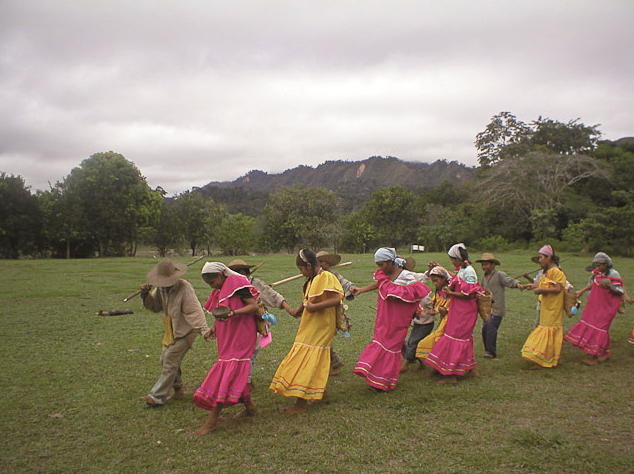
Source: Eleanor Briggs/ Wildlife Conservation Society
While they were exploring the jungle’s remote interior, the prospectors discovered footprints, and empty tortoise shells, and heard shouting in the forest. Later on, they even experienced indigenous people congregating around their camp. Allegedly, the oil company covered up these events since the finding of uncontacted people would have halted their oil work.
Piripkura Of Brazil
This remote and isolated tribe, known to their settled indigenous neighbors as Piripkura, or “butterfly people,” have made their existence known to anthropologists. They were given the name “butterfly people” because of their frequent flight through the forest.

Source: Gleilson Miranda/ Governo do Acre/ Flickr
The Piripkura were contacted for the first time by Brazil’s indigenous affairs agency in the 1980s, but the group quickly retreated into the forest. There were about 20 of them during this interaction, and they all spoke the Tupi-Kawahib indigenous language. Only three tribe members have made contact with outsiders since then.
The Acre Tribes Of Brazil
In the Acre state of Brazil exist ferociously independent uncontacted groups who exhibit hostility toward outsiders. Some have even been observed shooting arrows at intruders and airplanes passing by. It’s likely that this unbridled hostility is a direct result of their lineage.

Souce: JialiangGao/ Wikimedia Commons
Its highly probable that the Acre tribes are the survivors of the brutal South American rubber boom. During this time, indigenous peoples were slaughtered or enslaved in the rubber trade and were often worked to their demise. Unfortunately, there were only some who managed to flee into the jungle to form new tribes.
Nukak Of Colombia
The Nukak are one of the 32 Colombian tribes that are at risk of becoming perilously endangered and on the near brink of extinction. In 1988, the Nukak miraculously emerged from almost becoming isolated, when about 40 of them were at the center of a media sensation. They arrived at a remote colonist town near their lands, but half of the whole tribe died of measles soon after.

Source: Achim Steiger/ Wikimedia Commons
The remaining survivors of the Nukak still face imminent threats. They are continuously surrounded by constant encroachment from drug organizations and paramilitary groups that are participants in various Colombian armed conflicts.
West Papuan Tribes
One of the most remote and inaccessible locations on Earth is in the western half of the island of New Guinea known as West Papua, which is governed by ethnically separate Indonesia. In West Papua exists more than 300 diverse tribes, a tiny number of which are likely uncontacted.

Source: West Papua Diary
Subjected to horrific discriminatory treatment and harassment from the Indonesian authorities, these tribespeople are often arrested and killed. These authorities not only violate the West Papuan way of life, but also assist and protect the companies that use exploitative practices to gain the vast resources of their region.
Yaifo Of Papua New Guinea
Explorer Benedict Allen disappeared for almost a month in 2017 before re-emerging from the East Sepik jungle region of the Highlands of Papua New Guinea, one of the most desolate regions on the planet. This isolated region occupies the eastern half of New Guinea’s island.

Source: Alamy
Allen was searching for the Yaifo tribe, which has had minimal contact with outsiders. The lack of contact was so prevalent that the tribe attained a near-mythical status since they were initially discovered by Allen 30 years prior.
Kawahiva Of Brazil
Among the most endangered indigenous tribes in the Brazilian rainforest are the Kawahiva who live near the city of Colniza in Mato Grosso, close to the Rio Pardo. Their numbers were last reported to be around 50 by the government’s indigenous affairs agency.

Source: Fionashek22/ Wikimedia Commons
Very little is known about their customs and lifestyles. They are believed to have stopped conceiving children because they are always in a constant fleeing from logging workers and other intruders who could pose as a threat. The tribe has been subjected to deforestation, illegal logging, and numerous genocidal attacks.
Korubo Of Brazil
One of the seven uncontacted tribes residing in the Javari valley on the border of Brazil and Peru is the Korubo. There are also seven contacted tribes, making the region one of the highest concentrated regions of isolated people on the continent. They are known for carrying large war-fighting clubs and are also called “clubber Indians.”
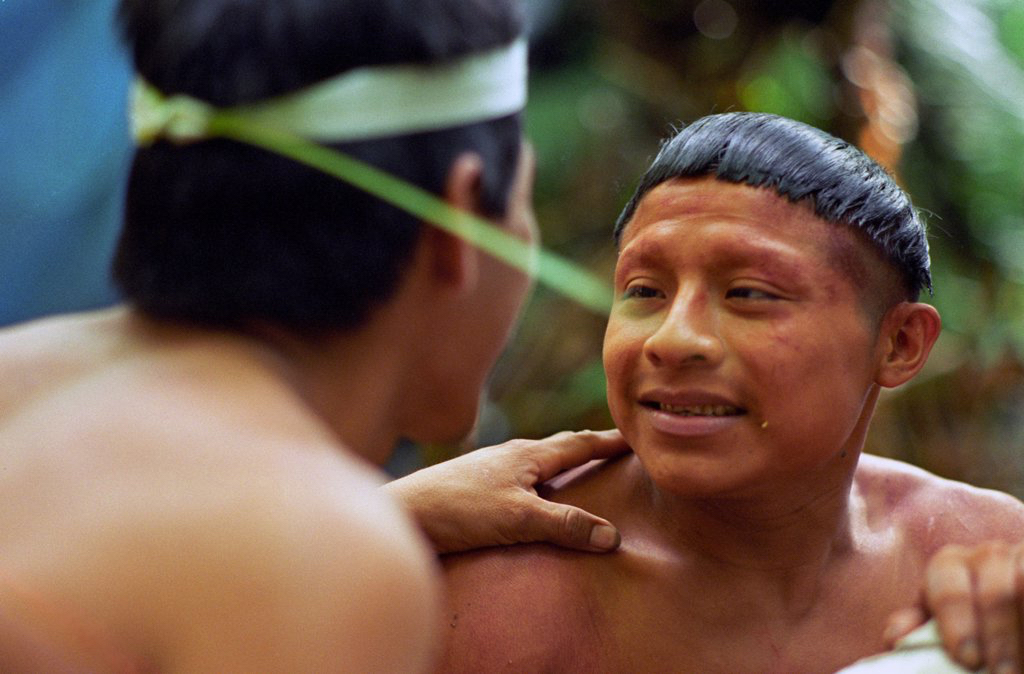
Source: Ricardo Beliel/ AmazoniaReal.br
A government agency made contact with around 30 Korubo in 1996. These select 30 separated from the primary group, which continues to remain uncounted and uncontacted.
Massacó Territory Tribe Of Brazil
In the Massacó Territory in the Brazilian State of Rondônia, it’s estimated that 300 uncontacted indigenous people still live there. Tortoises are believed to be a prominent part of their diet since explorers have stumbled upon mounds of empty tortoise shells.

Source: depositphotos
The tribespeople is also believed to have implemented gigantic bows and arrows into their everyday life. One bow that was found measured 13.12 feet long. There are around 115 records of indigenous groups living in isolation in the Brazilian Amazon.
Mascho-Piro Of Peru
The estimated 600-800 Mascho-Piro tribespeople of Peru have had some contact with settled indigenous people in the Amazon region for the past 40 years. Still, they have had pretty much no exposure to outsiders.

Source: Chany Crystal/ Flickr
Beginning around 2015, the Mascho-Piro people retreated from the forest to initiate contact with outsiders, despite their integral policy of voluntary isolation. This reversal, however, has sometimes been met with disaster, with many in the tribe continuing to honor the original policy of no contact with outsiders.
Peru’s Refugee Tribes
Seven sick and desperate members of an unknown and uncontacted Peruvian tribe made contact in June 2014 with a group of settled indigenous people in Brazil’s Acre region, close to the border of both countries. In that same summer, a larger number of about two dozen people from the same tribe emerged. They reported being attacked by unknown invaders.

Source: Sam Valadi/ Flickr
These refugee tribes have also been threatened by the invasive logging that devastated their homes and forest. Illegal logging remains a pervasive and insidious threat that results in violent conflicts and gruesome deaths.
The Moxateteu Of Brazil And Venezuela
The Yanomami tribe is the biggest group of the 35,000-strong relatively isolated people that remain in South America. For thousands of years, they have called the lush rainforests of Brazil and Venezuela their home. But, just like all isolated people, they are also prisoners of encroachment and deforestation.

Source: Corbis Images
They are highly aware of another group living in the forest called the Moxateteu. These are the uncontacted Yanomami who live in the more remote and desolate portions of the jungle.
Cacataibo Tribe Of Peru
Experts believe that the Cacataibo tribe is one of the 15 uncontacted groups that exist in Peru. They primarily reside in the Peruvian departments of Ucayali and Huanuco, near the basins of Aguaytia, San Alejandro, and Sungaraku rivers.

Source: Internet Archive Book/ Flickr
Despite the efforts the government has established for their protection, a large majority of the region they inhabit has been bought by oil and gas concessions. Logging and mining operations are the other threats that introduce disease into the population. Habitat destruction is a pervasive outcome of these acts.
Matsigenka Tribe Of Peru
Not a whole lot of information is known about the Matsigenka people of southeastern Peru, except that they live virtually uncontacted in the same area as the Cacataibo tribe. However, it is known that they have roamed to a small and remote enclave within their protected area.

Source: Kacper Świerk/ Ethnology.pl
Since energy and logging companies continue to pose harmful threats to their very existence, they will be on a downward trajectory toward extinction if nobody intervenes promptly to save them.
Isconahua People Of Peru
Unseen by outsiders until the 1950s, the patch of protected rainforest which remains an untouched jungle is where the Isconahua people live. The Isconahua, part of the Amazon people cluster, migrate seasonally in search of resources.

Source: J Mazower/ Survival
During the rainy season, they live in large houses. And, during the dry season, they migrate toward the beaches, rivers, and streams to find water and tortoises to eat. With a population of 80 people, they continue to be unengaged and unreached.
Akuntsu Of Brazil
The last four surviving members of the Akunstu tribe live in the state of Rondônia in Western Brazil. The Akuntsu merely exist by catching the little game that exists in the tiny patch of rainforest they reside on. This small part of rainforest is the last scrap of what used to be a thriving jungle that was destroyed to make room for cattle ranches.

Source: Adelino de Lucena Mendes/ Povos Indígenas no Brasil
No outsider has mastered the language of the Akuntsu. Upon learning that the survivors were taking refuge from being massacred by ranchers, loggers, miners, and other intruders for highway construction in the 1970s, the government sought to protect their land.
The Man Of The Hole
Last but not least, the most endangered and uncontacted tribe in the world is the one that belongs to the “Man of the Hole.” He is the single survivor of a massacre which made him the last member of an Amazonian rainforest tribe and is one that anthropologists don’t know much about.

Source: YouTube
The government has set aside a protected small patch of rainforest for this man who lives completely by himself, and, not to mention, he refuses contact with anybody. He got the nickname because he digs holes to hide inside and also traps animals. His people were all killed most likely because the small patch of forest was overtaken by cattle ranchers.
Long Neck Karen Tribe Of Northern Thailand
The Karen tribal group are refugee women from Burma who now live in Northern Thailand’s mountains. They are known for having brass rings around their necks, which push down the collarbone and ribs. This gives the woman the illusory appearance of having a long neck.

Source: Paula Bronstein/ Getty Images
Around the age of four the Karen tribe begins wearing these brass rings. Gradually, more rings start to become added to their necks. Due to tradition, this practice continues and isn’t only used for beauty purposes, but to also fend off danger from tigers.
Turkana Tribe In Kenya
Spotted in the dry, sandy region, the females of the Turkana tribe primarily live in Northwestern Kenya, but some of them reside living in nearby countries. The women of this tribe are nomadic and are primarily known for their basket weaving, fishing, and the annual Turkana festival. This important festival consists of men and women dressed in traditional clothing who perform cultural dances.

Source: Christopher Furlong/ Getty Images
The tribal women adorn themselves with gorgeous handmade necklaces which signifies their social status. The necklaces also help them find husbands.
Marquesan Islanders In French Polynesia
Arriving between 100 and 600 A.D., Polynesians were among the first indigenous Marquesan people. The Marquesan islanders are believed to be the most prominent craftsmen in French Polynesia and are influenced by the culture of Tahiti and France.

Source: mercurynews.com
They speak a language that’s a mixture of the East-Central Polynesian dialect. The Marquesan islanders are noticeably recognizable based on the intricate geometric tattoos that cover the entire body of the male and female tribe members.
Fulani Tribe Of West Africa
The Fulani people (also known as Fulbe) live scattered throughout West Africa and are primarily Muslim. They are dispersed nomadic herders and stay separate from the local populations.

Source: Eric Lafforgue/Art in All of Us/Contributor via Getty Images
Their tribe is famous for its elegant decoration of practical objects. Bowls and other geometric designs signify Fulani symbolism. There’s also an important contest called Guerewol where men dress in elaborate outfits and face paint while dancing for hours on end in order to attract the attention of a future wife.
Kalash Tribe Of Pakistan’s Kalash Valleys
The Kalash people are the smallest of Pakistan’s minority ethnic groups, consisting of about 4,000. The tribe can be located in the three Kalash valleys of Pakistan: Bumburet, Rumbur, and Birir.
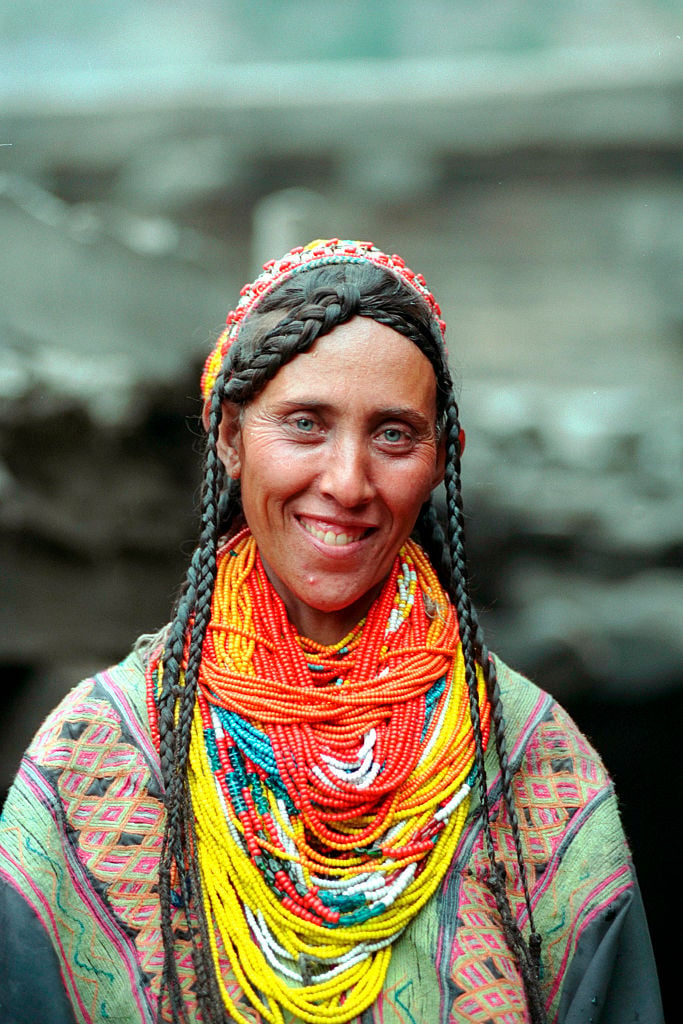
Source: Antoine Serra/ Sygma via Getty Images
Aside from having a practice that closely resembles ancient Hinduism, they also believe deeply in nature. A fascinating custom of the Kalash people is that they send the females who are menstruating to bashaleni, a building where the women go to get a break from their daily chores.
Inupiat Natives Of Arctic Alaska
For about 4,000 years, the Inupiat people of Alaska have existed. They have had to gain a deep and fundamental understanding of their resources and develop a connective culture that consists of sharing and working together. Bowhead whale hunting is one of the essential components of their shared culture.

Source: Jenny Evans/ Alaska Magazine
Bowhead whales weigh up to 60 tons and it’s no easy feat capturing them. However, the activity allows the community to bond. Once the whale is caught, they share the catch and thank the whale for its sustaining life.
Dogon Tribe Of West Africa
This West African indigenous tribe has roots in strong religious traditions. After a member passes on, they are buried immediately, and then a dance is performed where members are seen with wood and fibers from hibiscus plant masks.

Source: onedio
The mask is significant since it symbolizes the enduring connection between this life and the afterlife. Traditionally, the mask ensures that the deceased person’s journey to the next world is swift and smooth. They also have a secret language, called the Sigi so, which is reserved for the mask society.
Yao Ethnic Group Of South China’s Huangluo Village
In the Huangluo Village of South China lives the Yao ethnic group who have very distinct characteristics and traditions. One of the most notable traditions is for women to keep their extremely long hair, which is almost two meters long. It’s a tradition that is continually passed down from generation to generation.

Source: Reddit
Washing their hair in a rice water solution symbolizes prosperity, and wealth. It also means that their hair will continue to grow strong and longer in length.
Tsaatan Tribe Of Mongolia
With only 44 tribal families left, the Tsaatan tribe exists deep in the Mongolian rainforests. Straddling the border between Russia and Siberia, they are concealed in an isolated corner of Northern Mongolia. Tsaatan translates to “people with reindeer” because their lives depend on their family’s herd of reindeer. They rely on them for food (which is quite rare), milk, and transportation.

Source: About Outdoors
The Tsaatan are the last remaining tribe in the world to ride and herd reindeer. Even though they are a diminishing indigenous group, they welcome any visitors.
Long Horn Miao Tribe Of China
In the Guizhou Province of Southwest China are the Long Horn Miao tribe, a branch of the Miao ethnic group. One of the most important and unique aspects of their tradition are the costumes which express their traits, culture, and emotion.

Source: Reddit
Women and young girls wear detailed headpieces made from horns that get woven into their hair. Then, a wool bun and linen are placed on the head, and then a white ribbon is tied to it. The Miao tribe gets the name “Long Horn” from this headpiece.
Mursi Tribe Of Ethiopia
In the remote region of Ethiopia’s Omo Valley is where the Mursi tribe are located. They are known for the powerful stick fighting between men, and then the women whose primary feature is the wooden lip plates inserted into their lips.
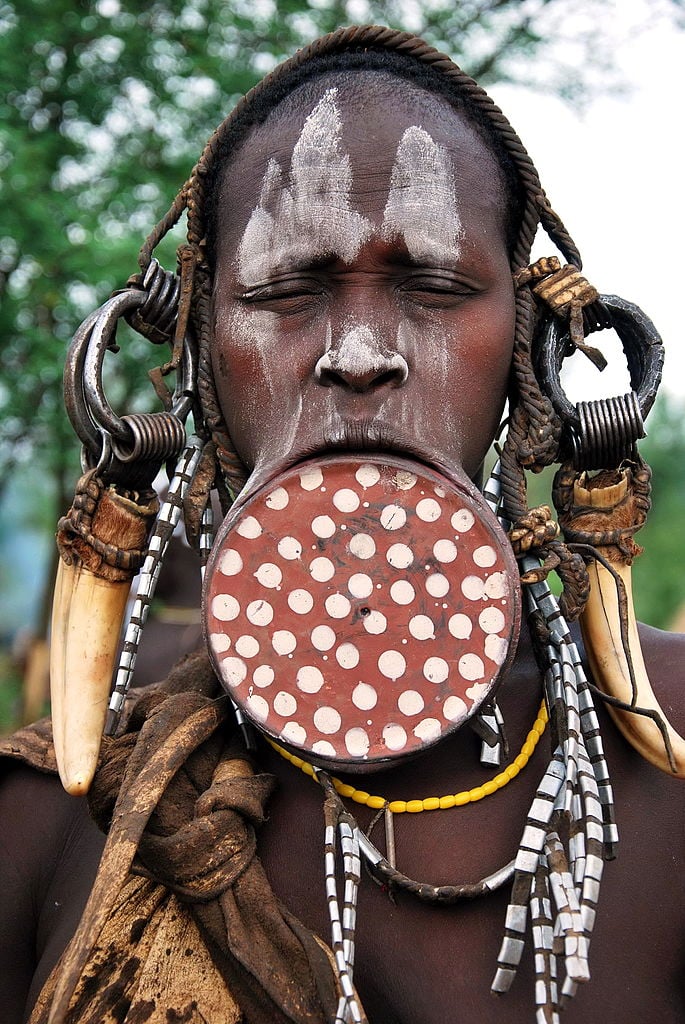
Source: Frieda Ryckaert/Contributor via Getty Images
These lip plates symbolize female beauty and the Mursi identity. By the time a girl is either 15 or 16, her lower lip is cut and she gets to choose how far she wants to stretch her lip.
Asaro Tribe Of Papua, New Guinea
Also known as the Holosa, the “Mudmen” of the Asaro tribe are recognized by their distinct mud masks filled with pigs’ teeth, painted white skin, and long bamboo fingers. There’s a legend that the men had to flee and hide in the river from their oppressors. By adorning themselves in clay, they were able to blend into their surroundings.

Source: Eric Lafforgue/Art in All of Us/ Corbis via Getty Images
The oppressors thought they were evil spirits and ran away. It’s not completely known when the tribe first came about, but they’ve been believed to exist for four generations.
Kayapo Tribe Of Brazil
The Kayapo tribe live south of the Amazon River in Brazil and also refer to themselves as “Mebengokre” which translates to “people of the wellspring.” They have a strong and spiritual connection to nature, as they own acres of grassland and tropical rainforests. However, they are at risk of deforestation and it remains a struggle to protect them – their main goal.
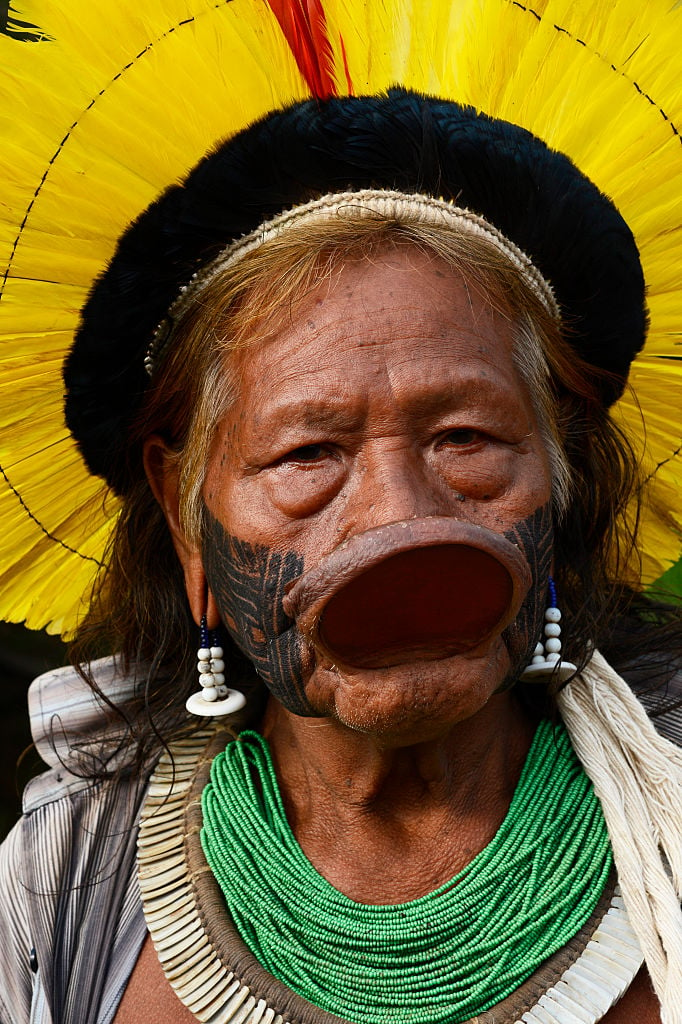
Source: John van Hasselt/ Corbis via Getty Images
Inserting clay disks into their lips is one of their traditions. Later on, larger plates are inserted which stretches the lip even further. Lip disks, for example, are seen on Kayapo senior men.
Himba Tribe Of Northern Namibia
With a population of approximately 50,000, the ancient Himba tribe is an indigenous group located in northern Namibia. Their people are tall and slender and wear unique hairstyles (the women have red matted braids made from goat hair and mud), as well as traditional jewelry.

Source: Eric Lafforgue/Art In All Of Us Corbis via Getty Images
The women prominently put red ochre cream on their hair and skin. They rely on the cream because it protects their skin against the harsh sun and blocks hair growth. The ochre stone is grounded into small pieces, mixed with butter, and heated with smoke. However, the red is put through their braids only if they are old enough to take care of their hygiene.
Maasai Tribe Of Kenya
As one of the oldest warrior cultures in all of history, the Maasai warriors of Kenya are known for much more than being incredible warriors. They are also known for raising cattle, which is their primary source of nutrition. Also, their very long limbs make them known as some of the tallest people in Africa.
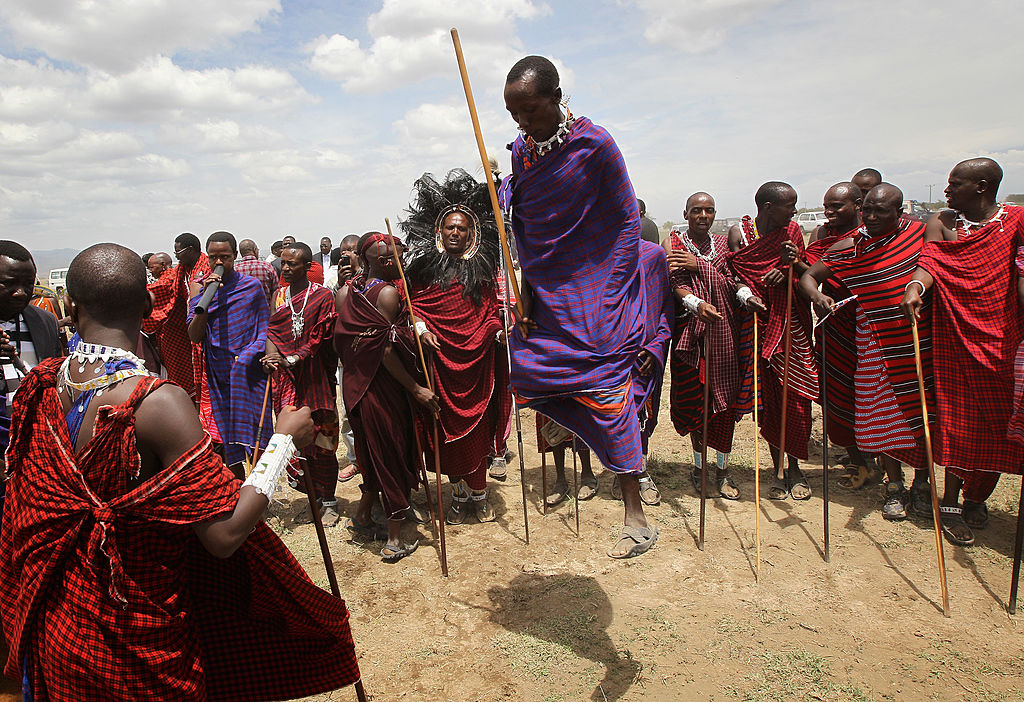
Source: Chris Jackson/ Getty Images
Their special ceremony called Eunoto is where boys make their transition to manhood and participate in jumping dances. Whoever jumps the highest means that they are seen as a more eligible bachelor.
Maori Tribe Of New Zealand
From food to culture to customs, New Zealand’s Maori tribe plays a pivotal and important role in the New Zealand way of life. One of the biggest elements of the Maori is their tattoos (also called “Ta Moko”) which are symbols of respect and loyalty to their culture. Each tattoo is unique, as well.

Source: Sandra Mu/ Getty Images
Additionally, the Maori people are very well-known for “Haka,” a tribal war dance. During this dance, people stomp and chant in unison implementing large physical gestures.
Khampa Tribal Warriors Of Tibet
Also known as “Buddha Warriors,” the Khampa warriors hail from Kham province in Eastern Tibet. The traits they are primarily associated with are immense bravery, independence, and horsemanship. In fact, they come from the toughest tribe in the whole of Tibet and specifically dedicate their lives to the precious land.
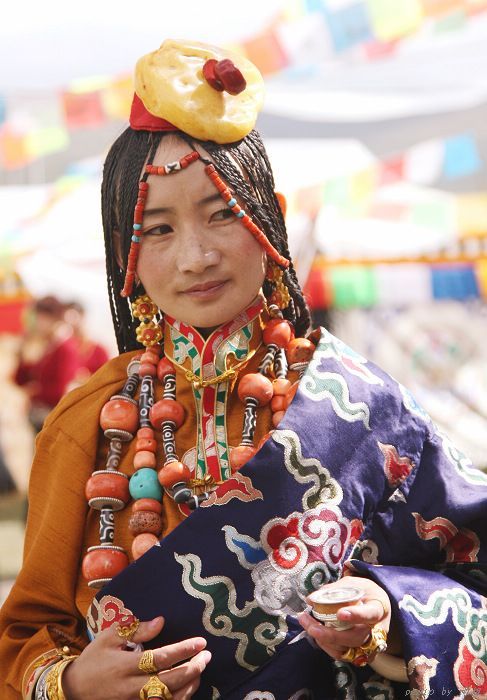
Source: Pinterest
Along the Tibetan plateau, there are horse racing festivals that take place each summer. Extravagant costumes and hair ornaments aid in helping them win the contest.
Arctic Chukchi People Of Russia
Made up of around 15,000 people, the indigenous people of the Chukchi peninsula are reindeer hunters by tradition. They refer to themselves as “Lygoravetlat,” which translates to “genuine people.”

Source: Jacques Langevin/Sygma/ Getty Images
Due to the extreme climate conditions, living is difficult for them. Generosity and hospitality are key attributes of the Chukchi people. The Chukchi community must provide for anybody that needs help and isn’t allowed to refuse anyone. Hence, they identify themselves as the “people standing openly.”
Ladakh People Of India
Extremely hardworking and reliant on agricultural means, the Ladakh people are known to live the most honest and nomadic lifestyle. Barley, wheat, and beans are their primary sources of agriculture.

Source: The Tribune India
They are much different from other Indian people because of their clothes, faces, and physique. Buddhism is accepted as their faith and they adamantly believe in the power of spirits and gods in the material realm. The Ladakh people are said to be the most joyful and content in nature and also live a life fairly devoid of any crime.
Loba People Of Northern Nepal
The ancient and vanishing kingdom of Mustang in Northern Nepal borders the China and Tibetan plateau. It’s also centered between some of the world’s most highest neighboring mountains.

Source: Nepal Travel Adventure
Mustang’s ancient culture is one of the remaining fortresses of traditional Tibetan life. For the Loba people who reside there, they are largely religious and are dedicated to prayer. They also have festivals and integrate Tibetan Buddhism into their daily routines. And, they also still hold the belief that the Earth is flat.
Rabari Tribe Of Western India
In western India reside the indigenous Rabari people who lead a semi-nomadic lifestyle. Some of its people raise cattle and others are located in villages nearby. Their lifestyle is unique in that it’s matriarchal-leaning, meaning that the women are in charge of most of the daily affairs while the men are responsible for the cattle.
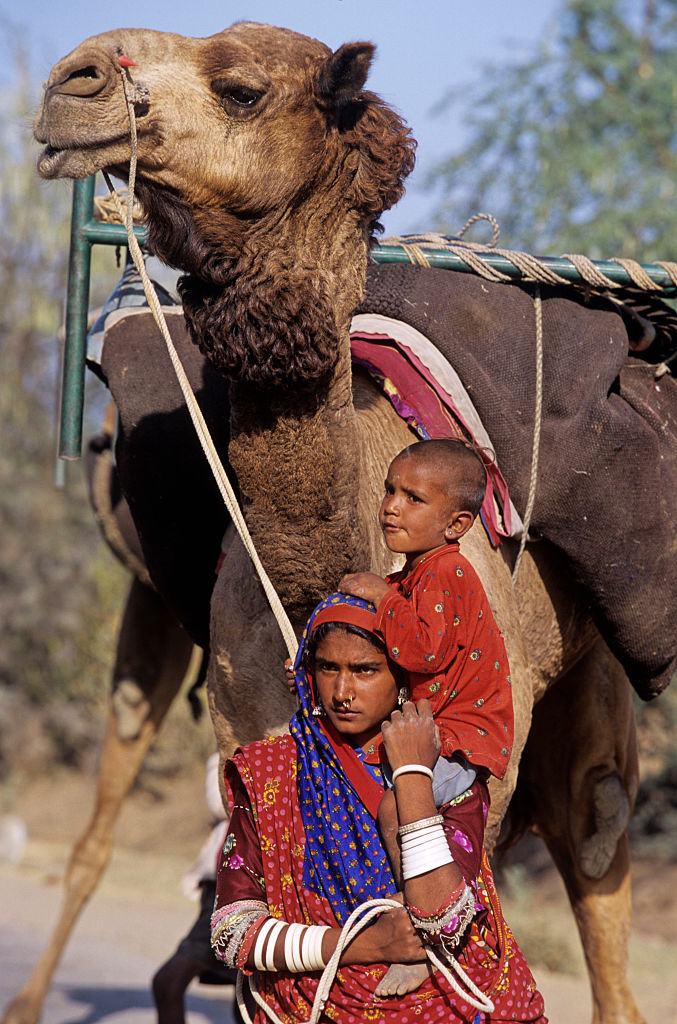
Source: Soltan Frédéric/Sygma/ Getty Images
Primarily, the Rabari women are known for their stunningly detailed thread and beadwork. Their intricate artwork designs are distinct and special to Rabari culture.
The Gauchos Of Argentina
Leading simple lives, the Gauchos of Argentina are men that are skilled horseman and hunters. Their foundations go all the way back to the War of Independence, and, post-war, they migrated to the Pampas. While they were there, hunting and living off the land became essential to their daily wellbeing.

Source: Christopher Pillitz/ Getty Images
However, at the dawn of the 19th century, a decline in the Gaucho culture began. Despite this decline, the culture does live on and thrives through tourism.
Ainu People Of Japan
Many people have not heard of the Ainu people, an indigenous group of Japan whose origin is unknown. Even Japanese people aren’t aware of this ethnic group. It was only recently in 2008 that the Japanese government recognized them as an official indigenous group.
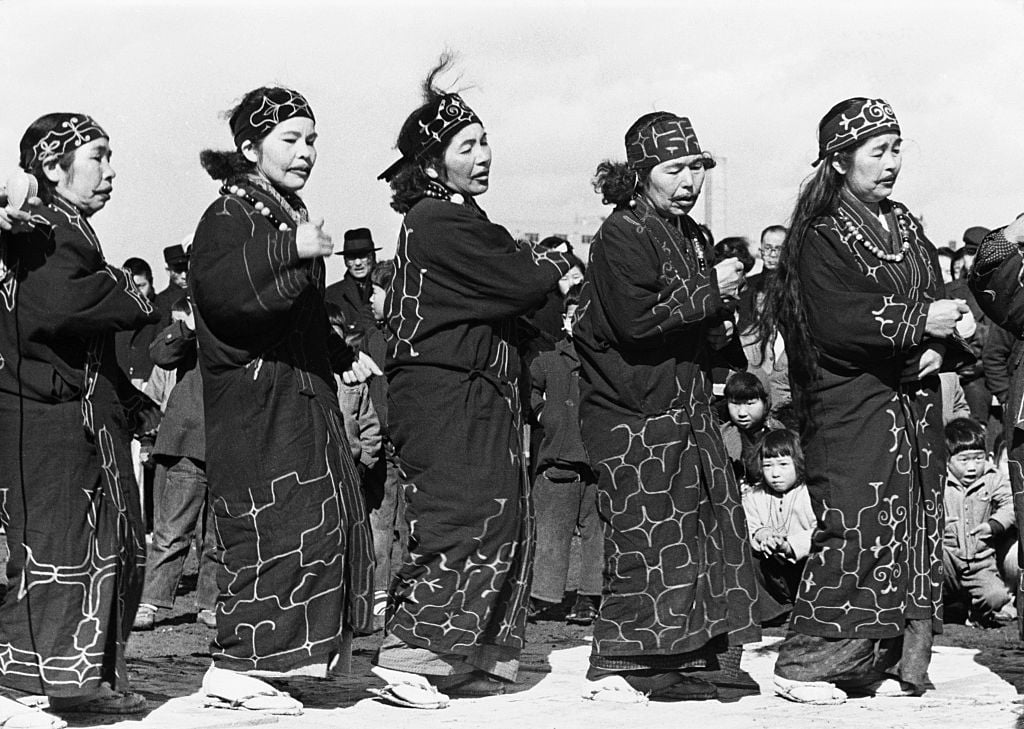
Source: Hulton-Deutsch Collection/CORBIS/ Corbis/ Getty Images
They don’t possess a written language, but it’s been passed down through generations. The Ainu people also participate in a traditional dance where movements replicate the movements reflected in nature. They also connect with divine beings.
Rajasthani Tribe Of Northern India
In Northern India exists the awe-inspiring Rajasthani tribe. The women are remarkable, traveling many miles and, sometimes multiple trips in one day, to gather water for themselves and their animals. They can travel up to 10 miles and carry the water-filled jugs on their heads.

Source: Tim Graham/Getty Images
Since it’s their responsibility and not the men’s, the women go to a well that catches rainwater, known as a “beri.” The task is not easy for the Rajasthani females because the village barely receives any rainfall.
Akha Hill Tribe Of Thailand’s Mountains
The Akha Hill tribespeople live in the villages of Thailand’s beautiful mountains. Respecting all humans and Mother Nature’s naturally abundant resources is known as “The Akha Way.”

Source: In Pictures Ltd./Corbis / Getty Images
This tribe is primarily known for their agriculture (grains and vegetables) and living off of the land. The Akha are excellent farmers with the women picking tea leaves every 45 days, roughly accumulating about 1.5 tons. Harvesting tea leaves is one of the primary and most notable duties of the Akha Hill Tribe.
Hmong Clan Of China And Southeast Asia
Despite their periodic relocations throughout the years, the Hmong ethnic group living in China and Southeast Asia have retained their authentic cultural identity. Poems, songs, and ancestral stories comprise their expressive oral language.

Source: Paula Bronstein/ Getty Images
The Hmong are humble people and the forever relationships between relatives and clan members is of utmost importance. For instance, from the moment they’re born, the Hmong children take their father’s last name automatically. Thus, they end up becoming lifetime members of the clan.
Samburu Tribe Of Kenya
As a semi-nomadic group, the friendly Samburu live in Northern Kenya and continually uphold the traditions and customs of their people. They reside in groups of five to ten families; the men look over the cattle, while the women gather vegetables and take care of the children.

Source: Siegfried Modola/ Getty Images
Traditionally, the women’s dress consists of red cloth worn as a skirt, as well as wearing colorful beaded necklaces and bracelets. A prominent aspect of their culture is dancing and they don’t use any instruments during their performance.
Quechua People Of South America
The indigenous Quechua people live in Peru and descended from the Inca Empire. They are they are mainly identified with their vibrant, high-quality textiles. Using the wool of llamas, alpacas, and sheep, they spin and dye it with splashes of bright colors.

Source: Dan Kitwood/ Getty Images
After the dying is complete, they weave the wool into gorgeous blankets, clothes, and many other things. Weaving intricate patterns and designs is an ancient tradition of the Quechua people and it’s extremely important to them. To this day, they still pass down this tradition.
Dongria Kondh Tribe Of India
Residing in about 100 villages with about 8,000 people, the fascinating Dongria Kondh live in the dense forests of Eastern India’s Niyamgiri hills. As settle rural people, they farm the hills that surround them and harvest the crops. They also worship Niyam Raja, the mountain god.

Source: Atlantablackstar
The jewelry and hairstyles of the Dongria Kondh are very unique. They believe that supernatural beings control their lives. Sadly, they are listed as a Particulaly Vulnerable Tribal Group (PVTG).
Sengwer Tribe Of Kenya
Living in the forests of Kenya exist the hunter-gatherer community of the Sengwer who are facing eviction from their homeland. The Cherangany Hills gives the Sengwer tribe their unique culture and identity, and are certainly not the first indigenous people under the threat of violence and extinction.
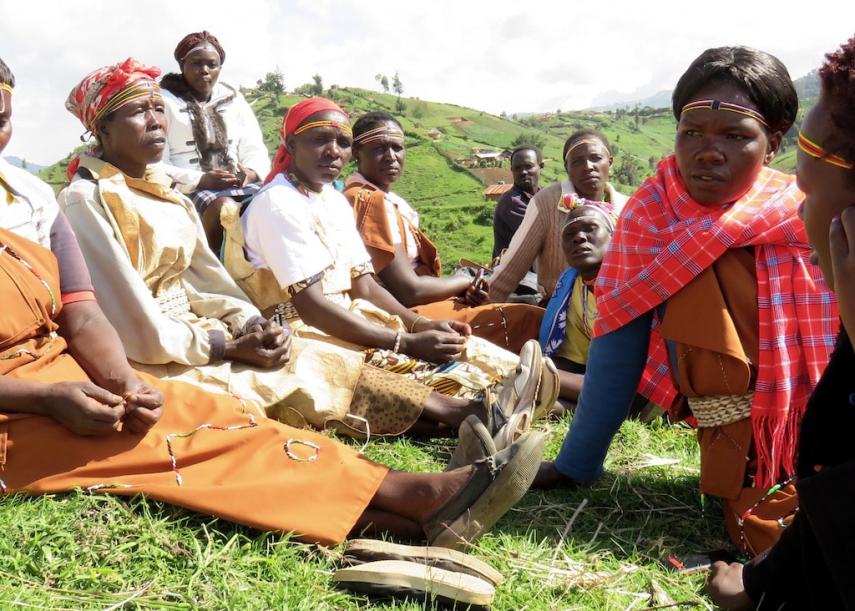
Source: Forestpeoples
They won’t let the setback deter them, as they plan to fight to save their forest and way of life. This fight may even mean going directly up against the African court.
